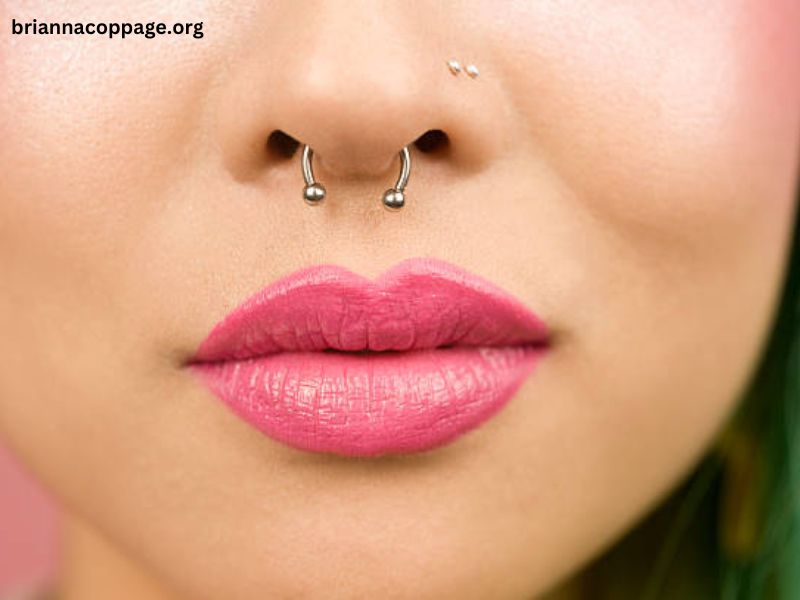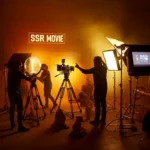Nose piercings are among the most popular body modifications in the world, transcending cultures and centuries. A nose piercing can be a simple aesthetic choice or a meaningful expression of identity. However, not all noses are created equal, and choosing the right type of nose piercing for your particular nose shape can enhance the overall appearance of the piercing and ensure a more comfortable healing process. In this comprehensive guide, we will explore the different types of noses and how they influence the choice of nose piercings. Whether you’re considering a nostril, septum, or bridge piercing, knowing how your unique nose shape interacts with various jewelry options will help you make a well-informed decision.
Anatomy of the Nose
Before diving into the different types of nose piercings, it’s essential to understand the basic anatomy of the nose. The nose is made up of several key parts:
- Nasal Bone: The upper, rigid part of the nose that is made of bone and cartilage.
- Nasal Cartilage: The soft, flexible cartilage in the middle and lower sections of the nose.
- Septum: The partition that divides the nostrils, made of cartilage and bone.
- Nostrils: The two external openings of the nose, also known as the nasal apertures.
- Bridge: The area between the eyes, where the nose begins to slope downwards.
- Tip: The rounded, fleshy end of the nose.
- Columella: The vertical strip of tissue that separates the nostrils.
Understanding these parts helps in determining how different nose shapes and sizes will interact with specific piercings. For example, the thickness of the cartilage in the septum or the angle of the nostrils can affect how the piercing sits and heals.
Types of Nose Shapes
Just like faces, noses come in a variety of shapes and sizes. These variations can influence the placement and type of nose piercing that works best for you. Here are the most common types of nose shapes:
1. Straight Nose
A straight nose has a well-defined, straight bridge that is free of bumps or curves. This nose shape is often considered ideal for various types of nose piercings because it provides a balanced appearance and symmetry.
Ideal Piercings:
- Nostril Piercing: A nostril piercing on a straight nose is often very flattering, as the symmetry of the nose works well with a small, discrete stud or hoop.
- Septum Piercing: A straight nose also tends to suit septum piercings because the straightness of the bridge complements the piercing’s central location.
- Bridge Piercing: If you have a straight nose with a more prominent bridge, a bridge piercing (located on the bony area between your eyes) can create an interesting and bold look.
2. Button Nose
A button nose is characterized by its small, rounded tip and a less pronounced bridge. This nose shape gives the appearance of a delicate, youthful nose with a cute, button-like quality.
Ideal Piercings:
- Nostril Piercing: Button noses pair well with nostril piercings because the small size of the nostril complements a subtle, understated stud or tiny hoop.
- Septum Piercing: For those with a button nose, a septum piercing can add a little edge to the overall look without overpowering the nose’s natural roundness.
Button noses may struggle with more dramatic piercings, such as bridge or high nostril piercings, as these may look disproportionate to the nose’s size and shape.
3. Aquiline Nose (Roman Nose)
An aquiline nose, also known as a Roman nose, is often marked by a prominent, slightly curved or bent bridge. This type of nose is typically strong and defined, with a distinct curvature that can add character to the face.
Ideal Piercings:
- Nostril Piercing: A nostril piercing works well with an aquiline nose, as it can add a subtle yet stylish accent to the otherwise bold shape of the nose.
- Septum Piercing: Due to the prominence of the bridge, a septum piercing on an aquiline nose can be striking and complement the strong features of the nose.
- Bridge Piercing: Aquiline noses are often ideal for bridge piercings because the curve of the bridge can work with the placement of the jewelry.
Because of the distinctive curve of the bridge, it’s important to choose jewelry that aligns well with the shape of the nose to avoid disproportionate looks.
4. Snub Nose
A snub nose is a variation of a short nose with a slightly upward-turned tip, creating the appearance of a perky and youthful nose. The bridge of a snub nose may be slightly lower or less pronounced.
Ideal Piercings:
- Nostril Piercing: Nostril piercings work wonderfully with snub noses. The short and slightly upturned angle of the nostrils creates a balanced canvas for small studs or subtle hoops.
- Septum Piercing: Septum piercings can look great on snub noses, but the position of the piercing needs to be considered carefully. A high placement might appear unnatural, so a lower septum piercing works best to complement the nose’s angle.
Snub noses are often suited for dainty jewelry that doesn’t overpower the natural features of the nose.
5. Bulbous Nose
A bulbous nose is characterized by a round, somewhat fleshy tip. This nose type often appears fuller and may have a more pronounced, rounded shape, with little to no slope from the bridge to the tip.
Ideal Piercings:
- Nostril Piercing: A nostril piercing can still work with a bulbous nose, but you might prefer a larger hoop or a decorative stud to bring some balance and draw attention to the piercing area.
- Septum Piercing: A septum piercing on a bulbous nose can help to break up the roundness of the nose, offering a more striking and unique aesthetic. However, it’s essential to choose the right jewelry that doesn’t accentuate the roundness too much.
Avoid overly large jewelry or excessive decoration if you have a bulbous nose, as it can create imbalance in your overall facial appearance.
6. Hawk Nose
A hawk nose, often called an “eagle nose,” is characterized by a sharp, angular shape with a prominent, jutting bridge and a downward-facing tip. This nose shape is often bold and distinct, with a dramatic appearance.
Ideal Piercings:
- Nostril Piercing: A nostril piercing works beautifully with a hawk nose, especially when positioned slightly lower on the nostril for balance.
- Septum Piercing: The sharp angle of the hawk nose lends itself well to septum piercings, which can be worn both subtly or boldly depending on personal style.
- Bridge Piercing: A bridge piercing can complement a hawk nose by accentuating its angular structure. This piercing is especially striking when the bridge is pronounced.
With a hawk nose, it’s important to select jewelry that doesn’t compete with the sharp lines of the nose. Avoid overly soft or rounded jewelry styles.
7. Wide Nose
A wide nose typically features a broader bridge and larger nostrils. While wide noses come in many variations, the primary trait is the breadth across the nasal base, which can give the nose a fuller appearance.
Ideal Piercings:
- Nostril Piercing: Nostril piercings can still be quite flattering on wide noses. If you have a wide nose, you might opt for larger jewelry, such as bigger hoops or statement studs, to create a proportional look.
- Septum Piercing: A septum piercing on a wide nose can help to narrow the appearance of the nose and create a more balanced look. However, you should choose jewelry that is not too large, as it may draw attention to the nose’s width.
- Bridge Piercing: A bridge piercing on a wide nose can be a bold choice, drawing attention to the central part of the face and highlighting the nose’s features.
8. Flat Nose
A flat nose is characterized by a low, almost non-existent bridge and a more compressed or broad appearance. This type of nose can sometimes appear shorter or have little definition between the eyes and the tip.
Ideal Piercings:
- Nostril Piercing: A nostril piercing can work on a flat nose, particularly if you select jewelry that helps add definition and dimension. A subtle stud or hoop can create an attractive focal point.
- Septum Piercing: A septum piercing on a flat nose can often look more prominent, as there’s less natural definition from the bridge to the tip.
In general, flat noses can benefit from jewelry that adds a bit of height or length, such as vertical hoops or longer studs.
Conclusion
While the type of nose piercing you choose can depend on personal preference, it’s always helpful to consider how your nose shape will interact with different jewelry and piercing placements. Whether you have a straight nose, a bulbous nose, or any other variation, the right piercing can enhance your features and bring balance to your face. It’s essential to work with a skilled piercer who can evaluate your nose and offer professional advice based on anatomy and aesthetic considerations.
Remember, your nose is unique, and the perfect piercing should reflect your individual style while complementing your facial features. By understanding your nose shape and considering your options, you can confidently choose a piercing that you’ll love for years to come.






